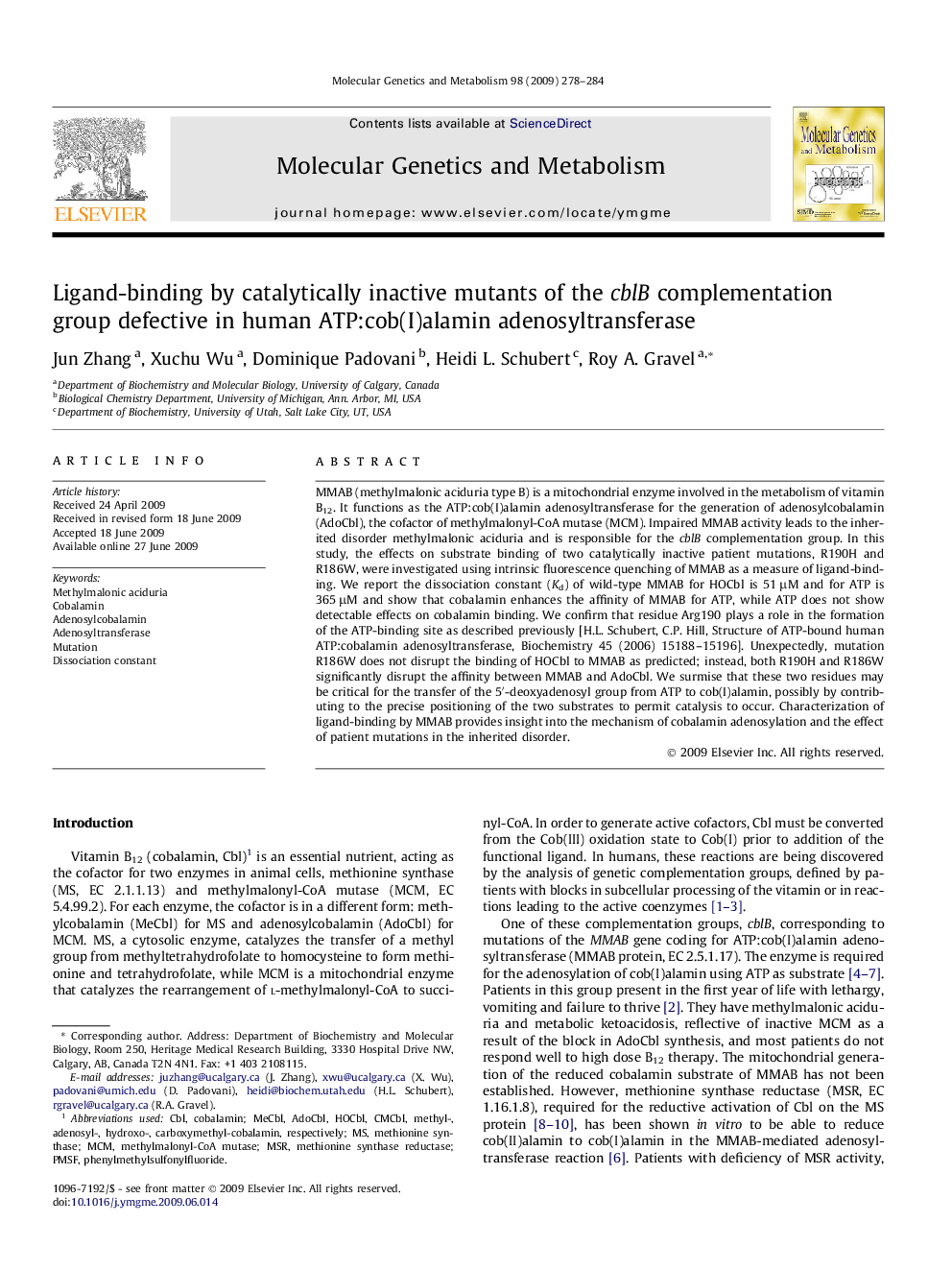| Article ID | Journal | Published Year | Pages | File Type |
|---|---|---|---|---|
| 1999784 | Molecular Genetics and Metabolism | 2009 | 7 Pages |
MMAB (methylmalonic aciduria type B) is a mitochondrial enzyme involved in the metabolism of vitamin B12. It functions as the ATP:cob(I)alamin adenosyltransferase for the generation of adenosylcobalamin (AdoCbl), the cofactor of methylmalonyl-CoA mutase (MCM). Impaired MMAB activity leads to the inherited disorder methylmalonic aciduria and is responsible for the cblB complementation group. In this study, the effects on substrate binding of two catalytically inactive patient mutations, R190H and R186W, were investigated using intrinsic fluorescence quenching of MMAB as a measure of ligand-binding. We report the dissociation constant (Kd) of wild-type MMAB for HOCbl is 51 μM and for ATP is 365 μM and show that cobalamin enhances the affinity of MMAB for ATP, while ATP does not show detectable effects on cobalamin binding. We confirm that residue Arg190 plays a role in the formation of the ATP-binding site as described previously [H.L. Schubert, C.P. Hill, Structure of ATP-bound human ATP:cobalamin adenosyltransferase, Biochemistry 45 (2006) 15188–15196]. Unexpectedly, mutation R186W does not disrupt the binding of HOCbl to MMAB as predicted; instead, both R190H and R186W significantly disrupt the affinity between MMAB and AdoCbl. We surmise that these two residues may be critical for the transfer of the 5′-deoxyadenosyl group from ATP to cob(I)alamin, possibly by contributing to the precise positioning of the two substrates to permit catalysis to occur. Characterization of ligand-binding by MMAB provides insight into the mechanism of cobalamin adenosylation and the effect of patient mutations in the inherited disorder.
